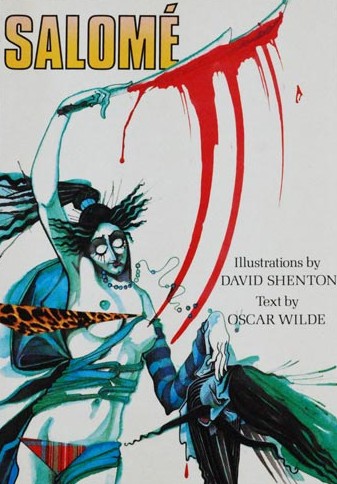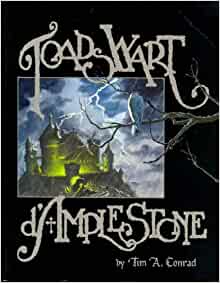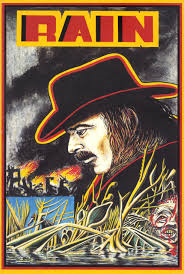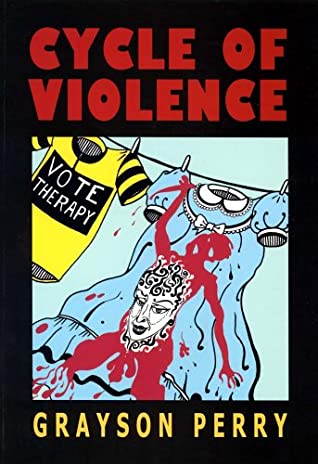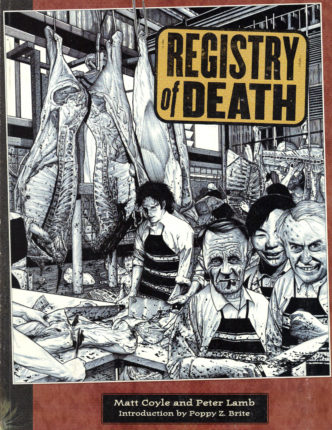Graphic novels—or, as a friend terms them, glorified comic books—occupy essentially the same place in the horror world as they do everywhere else: a vital yet shamefully underappreciated one. Graphic novels like THE DARK KNIGHT RETURNS, BATMAN: ARKHAM ASYLUM, FROM HELL, THE CROW and 30 DAYS OF NIGHT have attained a fair amount of popularity among horror buffs, but there exist legions more that aren’t nearly as well known, such as the twenty neglected masterworks listed below.
The following is a highly eclectic listing in both form and content, with one selection composed entirely of found material collages and another whose graphic content consists of still photographs, as well as a proper novel with illustrations integrated into the narrative. The subject matter is equally varied, encompassing surrealism, gothic melodrama, dark eroticism and straightforward pulp horror. What these selections have in common is that, simply, all are well worth your time to read and/or track down.
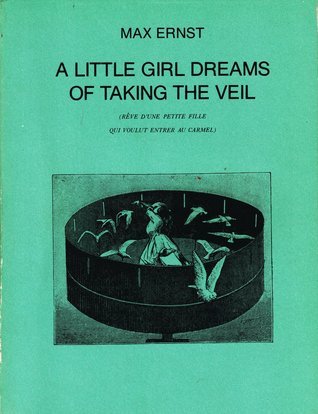 1. A LITTLE GIRL DREAMS OF TAKING THE VEIL
1. A LITTLE GIRL DREAMS OF TAKING THE VEIL
By MAX ERNST
The second of the collage novels (comprised of various pieces of found artwork cut and pasted into bizarre configurations) by surrealist legend Max Ernst, and in many respects the pinnacle. Unlike the others—THE HUNDRED HEADLESS WOMAN (1929) and A WEEK OF KINDNESS (1934)—A LITTLE GIRL DREAMS OF TAKING THE VEIL (1930) contains a semi-coherent narrative, which serves to flesh out a blasphemous and erotic dream experienced by the teenaged Marceline-Marie. A brief textual introduction fills us in on the life of M-M, marked by a rape and a mystical episode. Those things are obliquely addressed in the following 77 collages, stand-out examples of which include a woman addressing a pair of bodiless heads, a party stocked by decaying corpses and a man walking on water exhorting shipwrecked sailors to “Come and admire the view from the top of the mast.” A highlight of the surrealist movement, and a vital (if little-known) step in the development of the graphic novel as an art form.
2. THE HORDE
By IGOR BARANKO
In light of recent events this 2004 graphic novel from the Ukrainian writer/illustrator Igor Baranko has taken on a new relevance. The time is 2040 and the place a war-torn Russia, whose nutzoid dictator is looking to resurrect Genghis Khan and his Golden Horde to finish the job of conquering Eurasia that was begun back in 1206. Doing so entails calling up the spirit of a long-dead lama residing in the Ukraine, which is apparently “the crack between the worlds. The crack between Russia and Europe, east and west, the left and right hemispheres of the brain…” This is insanity of an extremely high order, and requires at least two (or more) readings to be fully understood. The artwork is bold and arresting, while the imaginative richness of the narrative is breathtaking, with a thoroughly provocative amalgamation of faiths and cultures. Yet THE HORDE also contains plenty of gore and monsters, making it a rare example of a tale that’s both intellectual and exploitive.
3. SALOME
By OSCAR WILDE, DAVID SHENTON
The British cartoonist David Shenton was responsible for this astounding graphic novel adaptation of Oscar Wilde’s immortal SALOME. Hailing from the seminal year 1986, this book is marked by a stunningly lurid color palette (unsurprisingly, red is the dominant hue) and free-form layout that restores to Wilde’s century-old play the shock and provocation it once possessed. The story, for those who don’t know, is taken from the Bible: the luscious young Salome becomes infatuated with a mysterious prophet who rebuffs her advances, leading her to dance lasciviously for her perverted stepfather after he promises he’ll do anything for her in exchange. In this book people emerge from the mouths of snakes, spectral giraffes crane their necks toward characters only to lose more flesh in each succeeding panel, and the moon demonstrates quite a range of expressions. In a word (or, more accurately, two words): eye-popping.
4. FROM INSIDE
By JOHN BERGIN
As a veritable epic of sustained surreality, FROM INSIDE is fairly remarkable. Underground artist/filmmaker John Bergin relates this bleak and horrific tale with admirable simplicity, and a paucity of textual captions that let the magisterial illustrations speak for themselves. The setting is a train traversing a post-apocalyptic landscape marked by mountains of debris and an ever-expanding ocean of blood. Among the train’s passengers is a young pregnant woman whose anxieties, expressed through nightmares, mirror the devastation of the apocalyptic setting. I know there are those of you who will criticize FROM INSIDE for being overly grim and/or morbid—as indeed many already have condemned it—so I’ll conclude with an it’s-not-for-the-squeamish admonition. For the non-squeamish, however, this can only be classified as a staggering accomplishment.
5. TOADSWART D’AMPLESTONE
By TIM A. CONRAD
One of the most gorgeously rendered graphic novels you’ll ever see, a gothic pastiche drafted in near-photographic black and white visuals that pay close attention to the play of light and shadow. The narrative is related in painstakingly achieved “olde world” syntax (“Damn the flood—that turns against me what Advantage of Agility my Stature could afford”) by a deformed dwarf residing in the dungeon of an accursed castle, which among other horrors is host to the creation of a hideous golem-like monstrosity. A witty and sumptuous piece of work done with great care and ingenuity; the fact that TOADSWART D’AMPLESTONE is so little known borders on the criminal.
6. 1000 AIRPLANES ON THE ROOF
By PHILIP GLASS, DAVID HENRY HWANG, JEROME SIRLIN
1000 AIRPLANES ON THE ROOF was a multi-media drama scripted by David Henry Hwang, designed by Jerome Sirlin and scored by Philip Glass. This lovingly designed large-format paperback contains the full text of Hwang’s script, accompanied by extensive stills from the July 1988 premiere of the show, which picture actor Patrick O’Connell interacting with Sirlin’s holographic scenery. As scripted by Hwang, 1000 AIRPLANES ON THE ROOF takes the form of an extended monologue by “M,” a New Yorker who finds his reality dissolving, forcing him to reach back into his memories to re-experience an apparent close encounter with inter-dimensional aliens. The reality of this encounter is never resolved, with the possibility broached that M might simply be a few bricks shy a load (a conclusion Sirlin’s profoundly surreal big city backdrops would appear to support). In place of the expected sci fi pulpiness, this psychologically based account provides an unnervingly immersive depiction of a mental breakdown, marked by uncertainty, apprehension and some genuinely haunting dialogue (“The room is saturated with the presence of things hidden”).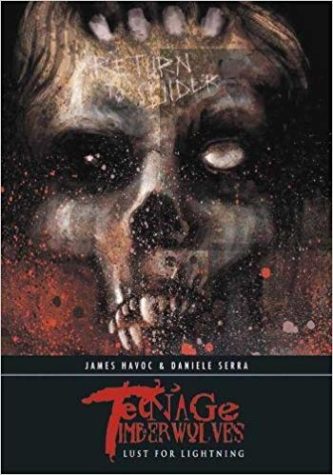
7. TEENAGE TIMBERWOLVES: LUST FOR LIGHTNING
By JAMES HAVOC, DANIELE SERRA
In this relentless psychotic nightmare in the form of a graphic novel we meet Billy the Wolf Boy, a homicidal shape-shifter. Billy is raised amid a traveling freak show run by a deranged preacher, and becomes a lightning-addicted graveyard-dweller who runs with a crowd of psychopaths known as the Teenage Timberwolves. Also featured are a serial killer who’s declared war on women after having his left testicle devoured by a whore, radical feminists residing in a house made of putrefied eyeballs, and what may be the first (and only?) depiction of electric chair sex. The narrative is related in a resolutely stream-of-consciousness manner, with slip-streamy art that all-but drips dementia (nearly every page is literally spattered with blood). Obviously this isn’t for everybody, but for those who can appreciate a work of extreme psychosexual imagination pushed to its breaking point, TEENAGE TIMBERWOLVES is a must.
8. PIGEONS FROM HELL
By ROBERT E. HOWARD, SCOTT HAMPTON (1988)
“Pigeons from Hell,” drafted in 1934, is widely recognized as the finest of the late Robert E. Howard’s efforts in the horror field. A forbidding account of two travelers unwisely bedding down in a haunted mansion, the tale is an action-packed blast of old school scares. This 1988 volume features a learned introduction by Ramsey Campbell, who examines “Pigeons from Hell’s” place in Howard’s pantheon (Campbell sees it as a sly refutation of the work of H.P. Lovecraft), followed by a bold graphic adaptation of the tale by the talented Scott Hampton. Hampton’s artwork is appropriately subtle and atmospheric, but also quite graphic in spots (i.e. a close-up view of brains oozing from a dead man’s head). Such an approach fully suits the story, and yields images worthy of being blown up and mounted on one’s wall.
9. RAIN
By ROLF F. STARK, MARLENE STEVENS
A wild one. Writer-illustrator Rolf F. Stark used events in his own life to create this harsh and unforgiving odyssey that begins in Nazi Germany, continues through war-torn Africa and culminates in the American underworld. Black magic, hallucinations, mass carnage and psychosis are among the horrors experienced by RAIN’S tormented protagonist, visualized through minutely detailed black and white artwork that freely incorporates varying states of consciousness. The whole thing often feels like a sustained Rorschach test, a crazy-quilt juxtaposition of reality, hallucination and memory that’s guaranteed to leave scars.
10. THE SCRIBBLER
By DAN SCHAFFER
The idea of a superwoman whose powers derive from schizophrenia is a strong one, and quite apropos given the conventions of the superhero format (in which said heroes nearly always have alternate guises). The protagonist of THE SCRIBBLER is Suki, an attractive woman harboring multiple personalities, one of them supernaturally-endowed. With this slim but potent volume Dan Schaffer proves himself a uniquely skilled practitioner of graphic dementia, providing artwork that seamlessly mixes photo-reality and surrealism, thus creating a profoundly unsettling portrait of madness and apprehension.
11. THE COUNTRY OF WOLVES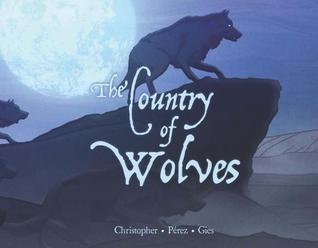
By NEIL CHRISTOPHER, RAMON PEREZ, DANIEL GIES (2012)
Directness and simplicity are integral to this folklore-inspired account of two Inuit brothers on a nighttime hunt in the Arctic who encounter a village full of werewolves. A genuinely chilly (in every sense of the word) effort that succeeds in presenting the beliefs of a culture light years removed from our own in an accessible manner, and does so with an arresting purple-hued color scheme and a memorably bleak ending.
12. SINKING
By JAMES D. HUDNALL, ROBERT P. ORTALEZA
A powerful depiction of the haunted life of Ted Smith, a schizophrenic man under the impression that Armageddon is underway because he once broke open a golf ball. Ted also believes monsters live in his closet and that the sky is a vast messaging machine, and harbors at least one alternate personality. Writer James Hudnall follows Ted from his suburban childhood to his adulthood as a babbling drifter. The luminous artwork by Robert Ortaleza is especially memorable; I liked how Ted grows chunkier as the story progresses, and how his delusions are all presented literally. A powerfully eccentric, confounding and, finally, deeply sad piece of work.
13. CYCLE OF VIOLENCE
By GRAYSON PERRY
This 1992 effort takes place in a future world where one Bradley Gaines is a five-time winner of the Tour de France. After suddenly breaking down during a bicycle race Bradley is plunged into a hallucinatory psycho-scape presided over by the specter of his abusive mother, in which state Bradley murders several women. CYCLE OF VIOLENCE often reads like a parody of a serial killer narrative, yet the explicitness of the violence and frank depictions of childhood abuse give it an extremely sharp edge. The book’s main selling point, of course, is Grayson Perry’s pen-and-ink artwork. It’s impressive as you might guess, coming from a renowned artist who renders his illustrations in freeform black-and-white that recalls the infamously bawdy scribblings of S. Clay Wilson.
14. SANDKINGS
By GEORGE R.R. MARTIN, DOUG MOENCH, PAT BRODERICK, NEAL McPHEETERS
A first-rate adaptation of George R.R. Martin’s multi-award winning 1979 story “Sandkings.” The artwork is quite redolent of 1980s comic book illustrations, and could admittedly be a little stronger overall, but this book’s creators were wise to keep their adaptation straightforward and unadorned. The tale, after all, has a powerful narrative pull, not to mention a great deal of nerve-wracking suspense. It features a guy living in a future world who buys a bevy of crablike creatures called Sandkings. The protagonist is instructed on how to turn himself into a god worshipped by the critters, but he turns out to be a decidedly benevolent deity. This leads to a great deal of mayhem in a story that functions as both a darkly metaphoric look at the darker edges of human nature and an old-fashioned blood-and-slime blow-out.
15. THE COUNTESS IN RED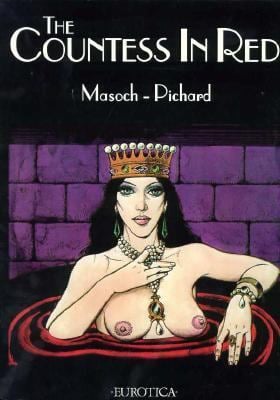
By LEOPOLD VON SACHER MASOCH, GEORGES PICHARD
A depiction of the crimes of the Hungarian “Blood Countess” Erszbet Bathory, who allegedly murdered over 600 people. This short tome was adapted from a story by Leopold Von Sacher Masoch (from whose name the term “masochism” was coined) by France’s late Georges Pichard, who specialized in erotic comic strips. That explains all the X-rated sex and nudity on display, and also the many depictions of pain and suffering, with someone (usually a naked woman) seen being tortured in the edges of nearly every frame. It’s a freakishly compelling and darkly erotic volume, even if the narrative, involving a young man drawn into the Countess’ perverse orbit, is a bit of a jumble. The final panel is especially memorable, showing the chained-up countess furiously masturbating in her prison cell.
16. FIRES
By LORENZO MATTOTTI
This Italian effort’s narrative is only semi-coherent, but its expressionistic visuals are a wonder to behold. FIRES concerns a reconnaissance mission to a mysterious tropical island, where a seemingly unflappable military officer finds himself drawn into the mystical atmosphere of the land and its inhabitants, a pair of shape-shifting creatures whose true natures are a mystery. Writer-illustrator Lorenzo Mattotti provides a wealth of artfully distorted paintings that superbly convey the seductiveness of the island’s rustic scenery. Mattotti’s use of color is especially mesmerizing, particularly in the final pages, with their images of a sea of blood and bright streaks of gunfire amid otherwise featureless backgrounds.
17. REGISTRY OF DEATH
By MATT COYLE, PETER LAMB
The titular “Registry” is a fascist state existing in some alternate timeline that possesses its own execution squad. The protagonist is a state appointed executioner who’s nonplussed to find himself on the Registry’s hit list, and becomes determined to fight back. A simple enough story related with admirable fire and anger, but what really makes REGISTRY OF DEATH the winsome nightmare it happens to be are the extraordinary pictures by Matt Coyle. Each page contains a short block of text at its bottom, with the rest of the space taken up with minutely detailed collage-like black-and-white imagery. Surreal distortion is a constant, as are copious depictions of violence and death, which aren’t excessive in any way but pack quite a punch in their bluntness and ferocity. Horror novelist Poppy Z. Brite provides an introductory story titled “In Vermis Veritas,” told from the point of view of a maggot wriggling around in the brain “of a young man (presumably REGISTRY OF DEATH’S hero) who died for no particular reason, after a protracted and honorable hunt.”
18. BROTHERS OF THE HEAD
By BRIAN W. ALDISS, IAN POLLACK
A short novel by England’s Brian W. Aldiss, presented with expansive illustrations by Ian Pollack that add immeasurably to the story (which was subsequently republished in standalone form, and didn’t work nearly as well). It relates the tragic account of conjoined twins, residents of a small English island called L’Estrange Head, who become rock stars but eventually die due to the evil machinations of a head growing out of one of the twin’s shoulders. That head (which lends the title a perverse double meaning) is the remnant of a third brother who never entirely made it to term, yet still exerts a vast influence over its siblings. Pollack’s Ralph Steadman-esque pen-and-ink illustrations, in conjunction with Pierrot Publishing’s highly eclectic formatting, are supposed to constitute a “new approach to fiction publishing.” I’m not entirely sure that’s the case, but the eccentric layout does make for an altogether unique and provocative volume.
19. THE FIRES OF PELE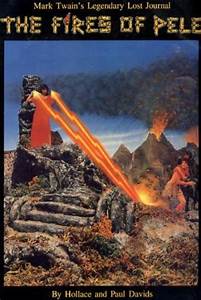
By HOLLACE DAVIDS, PAUL DAVIDS, SERGIO ARAGONES
Contained herein is a purported lost journal kept by a young Mark Twain during his 1866 sojourn in the “Sandwich Islands,” where he allegedly confronted all manner of odd creatures. The diary entries, related in a convincingly Twain-ish voice, are accompanied by incredibly elaborate photographic illustrations that incorporate models, painting and cartoon figures (drawn by MAD’S Sergio Aragones) in a manner that was quite revolutionary back in 1986. Hence, this volume is charmingly nostalgic on two fronts, harkening back to the days when Hawaii was viewed as a mysterious and forbidding environ as well as those of pre-Photoshop image manipulation.
20. EDDY DECO’S LAST CAPER
By GAHAN WILSON
The prolific cartoonist Gahan Wilson wrote this illustrated novel whose illustrations are actually integrated into the narrative in the manner of a children’s book. Said narrative, involving a private dick getting involved in a ransom case that comes to involve tentacle-sprouting cars, suit-wearing lobsters and flying buildings, is far too lightweight to make much of an impression. Wilson’s playfully macabre drawings, however, are among the most striking and distinctive in existence, compelling attention even when the prose falters.

